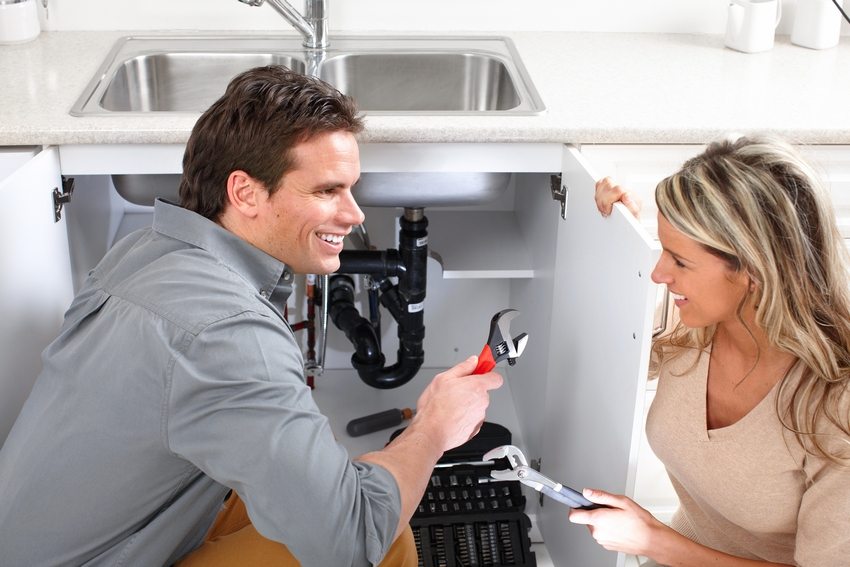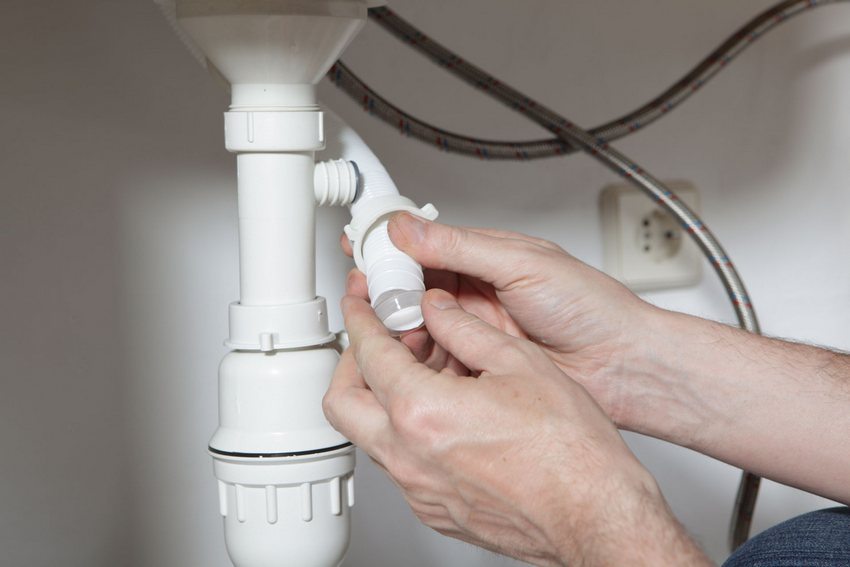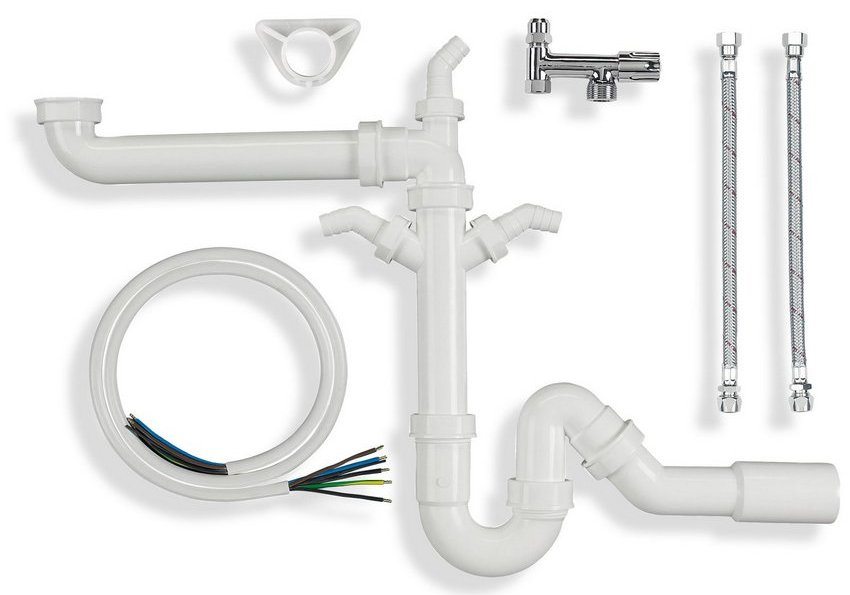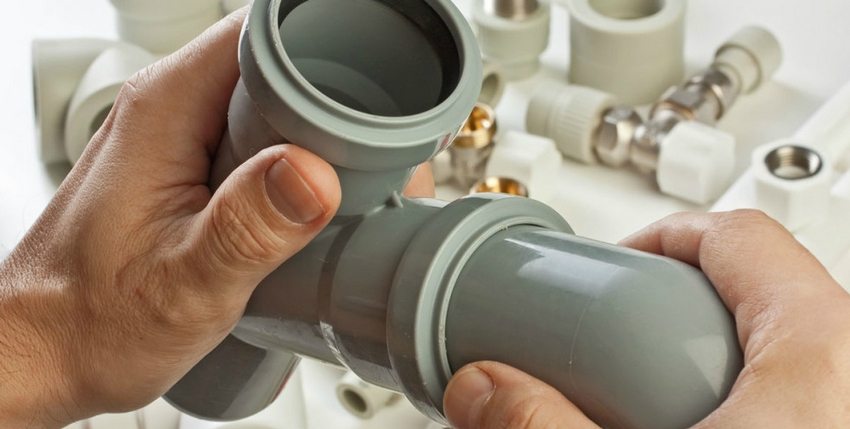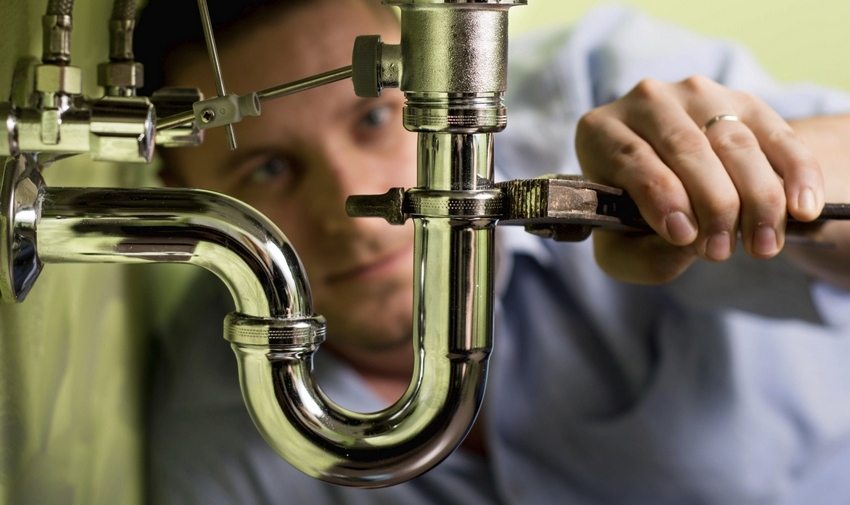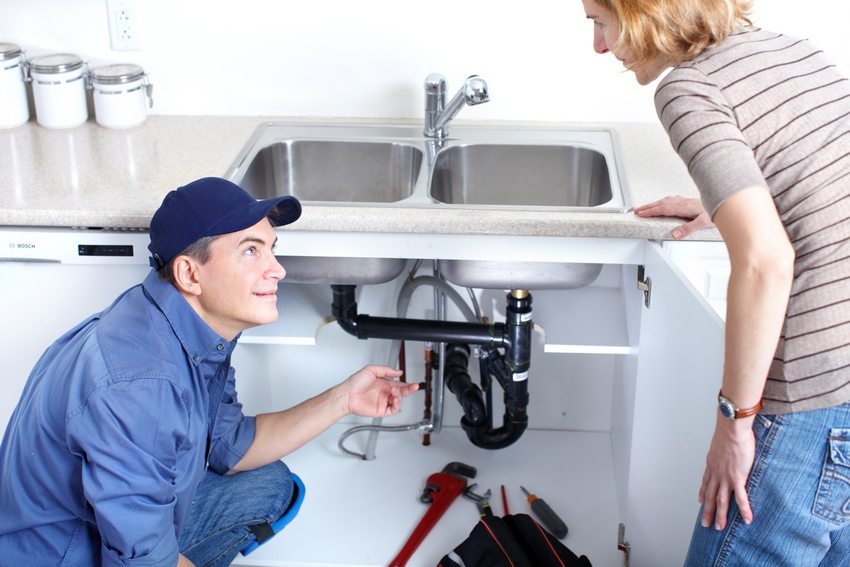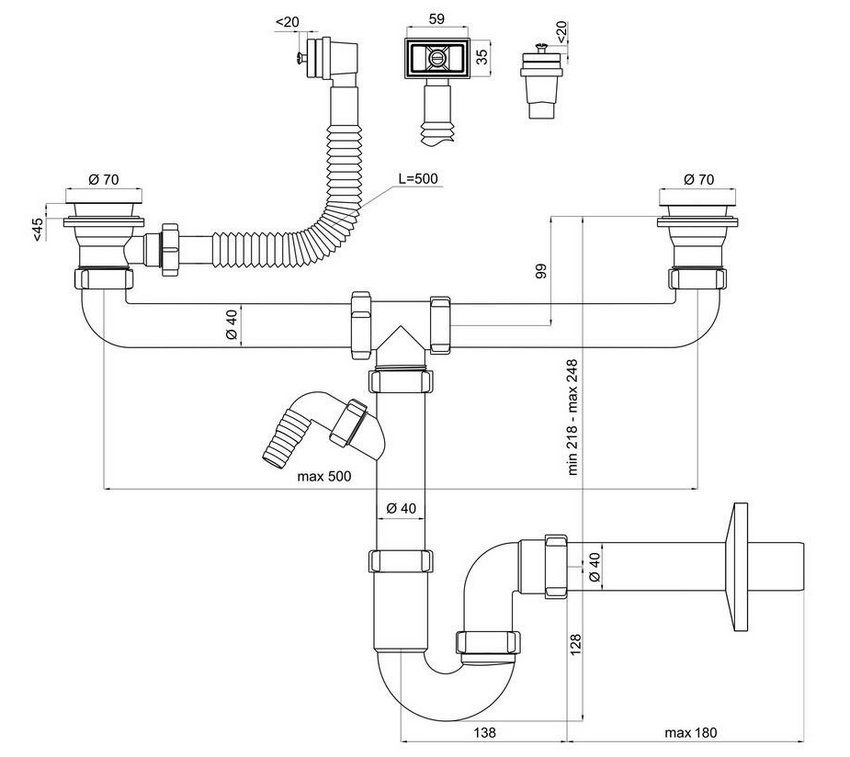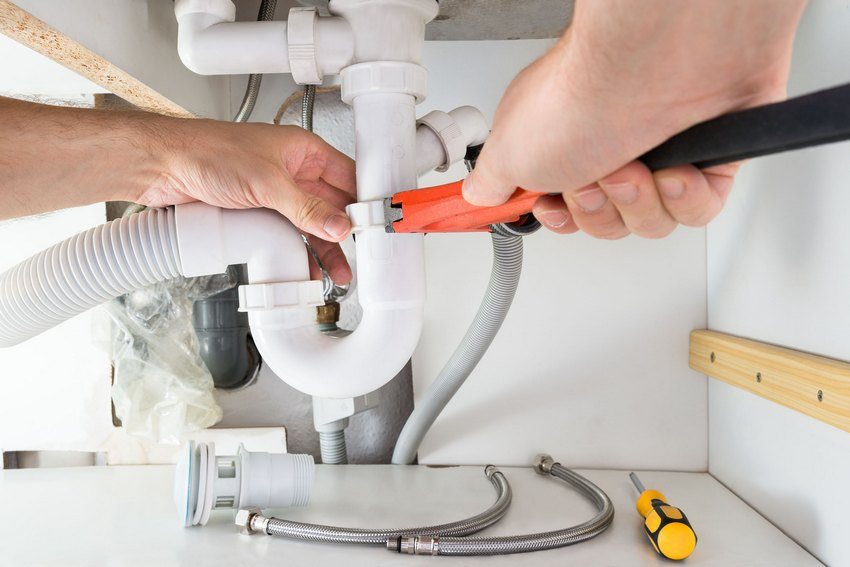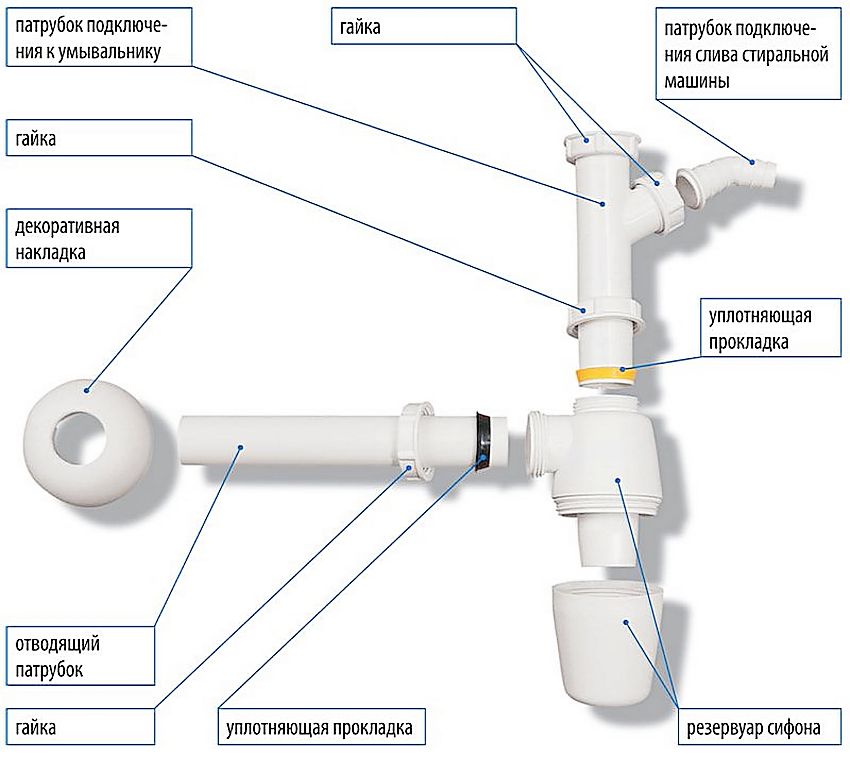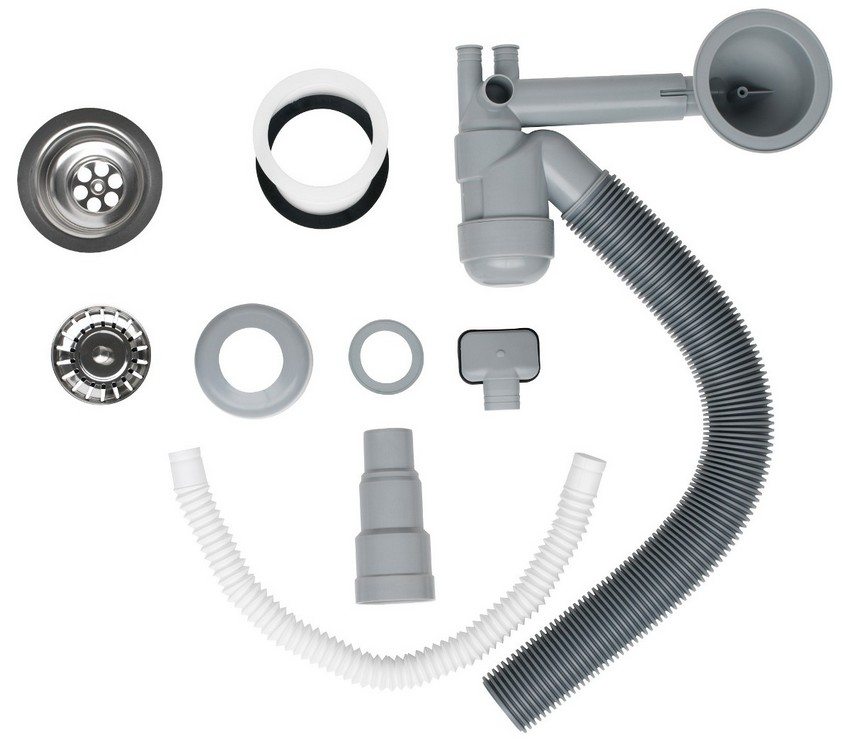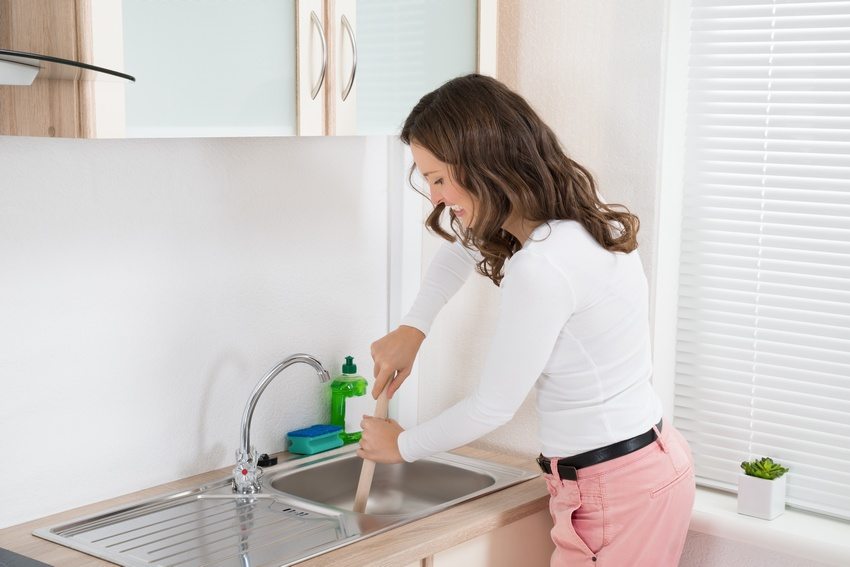The siphon is one of the most important parts of a home plumbing system. Its design does not let unpleasant odors and noises from the sewer into the apartment thanks to a kind of water plug. At the same time, it passes the used water down the drain. The choice of a siphon is a very important point, since the reliability and durability of the device depends on its design, material and other characteristics. Siphon for kitchen sinks is presented in different versions and modifications, so the choice can be quite difficult.
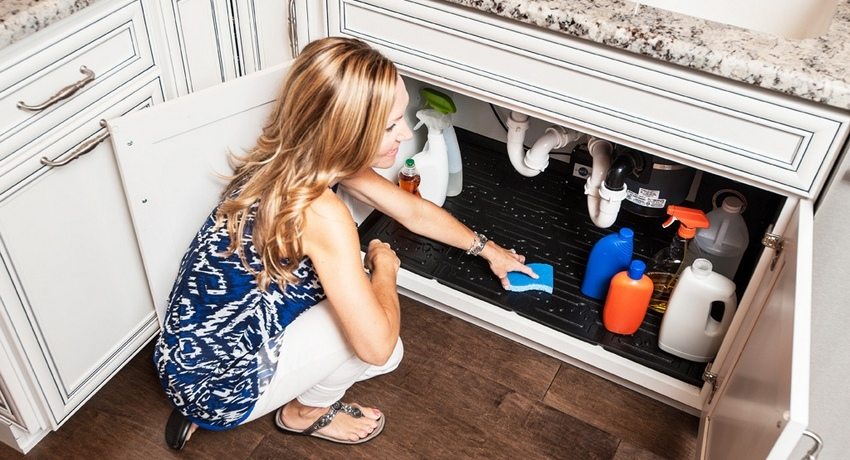
The choice of a siphon is a very important point, since the reliability and durability of the device depends on its design, material and other characteristics.
Content [Hide]
Types of siphons and their features
There are three main types of siphons for installation under the sink.
Corrugated - the simplest of all. The corrugated siphon for sinks is a folded plastic tube on a curved frame. On one side of the pipe there is an outlet through which water flows out of the sink, and on the other - an adapter that connects to the sewage system. This design is very easy to install - it does not require special skills and tools.
Another plus is the flexibility of the frame: the siphon for sinks with a corrugation can be installed anywhere. For example, if washbasin or the sink is not located according to the standard, connecting a corrugated siphon will not be a problem. It is also very cheap. The disadvantage of this type is the difficulty in cleaning. If such a siphon is clogged, then a simple tube will not help here - you will have to disassemble the entire structure and spend a lot of time cleaning.
Bottle - the most common option. The odor trap is located here at the bottom, which is shaped like a bottle. The pros and cons of this design are the opposite of a corrugated siphon. The bottle siphon is more difficult to disassemble and install, but when using it, it is easier to clear blockages. A significant plus of this type is the ability to connect additional equipment using tees or splitters. This makes bottle siphons for double sinks in the kitchen ideal.
By the way, a useful feature of this design is the overflow. This feature of the siphon structure is designed to control the water level in the sink bowl. Even if the pipe gets clogged, the sink siphon with overflow prevents water from overflowing over the edge of the sink.
Pipe siphon is a rigid curved pipe that can be collapsible or non-collapsible. The downside is that the rigid structure requires precise alignment of the sink outlet and the drain into the drain. The pipe siphon has both a water seal and an overflow, so if your sink is installed according to the standard, you can safely put a pipe siphon on it.
The choice of the type of construction depends on many parameters: the location of the sink relative to the outlet to the sewer, your financial situation, and others.
Helpful advice! There is also a fourth type of construction - hidden. It's basically a bottle siphon, but the bottle is built into the wall. This is the most expensive option, which allows you to significantly save space and hide communications. If you have enough money and want to show off good taste, opt for a hidden siphon.
Additional elements of the siphon
In addition to the basic structure, the following structural elements can be installed on the siphons:
- overflow - it is worth buying a siphon with an overflow for sinks in the kitchen in order to avoid flooding the kitchen. The overflow goes directly into the sewer outlet. In a kitchen sink, it is an outer tube that goes into a siphon;
- additional side entrance - they are equipped with siphons to which you can connect various equipment, for example, a washing machine. Such an entrance, as a rule, is located between the water seal and the neck of the sink. There can be more than two inputs.
The kitchen sink siphon is worth buying with both of these features. This will save you from the risk of accidental flooding if the drain is closed, for example, by dishes accumulated in the sink, and also makes it possible to connect equipment such as a dishwasher or washing machine.
The choice of material for siphons under the sink in the kitchen
There are two main materials for the manufacture of siphons - plastic and metal. Each of them has its own characteristics, advantages and disadvantages.
Plastic siphons are cheaper designs, especially if they are made of polyethylene. They usually have a very simple tubing arrangement and few connections. Siphons made of polypropylene, which are more durable and durable, are more expensive. In addition, polypropylene is less sensitive to high temperatures, so it is recommended to use it if you are going to connect a washing machine with a boil mode. Sometimes the plastic siphon can leak. In such cases, it may be sufficient to tighten the threaded connections.
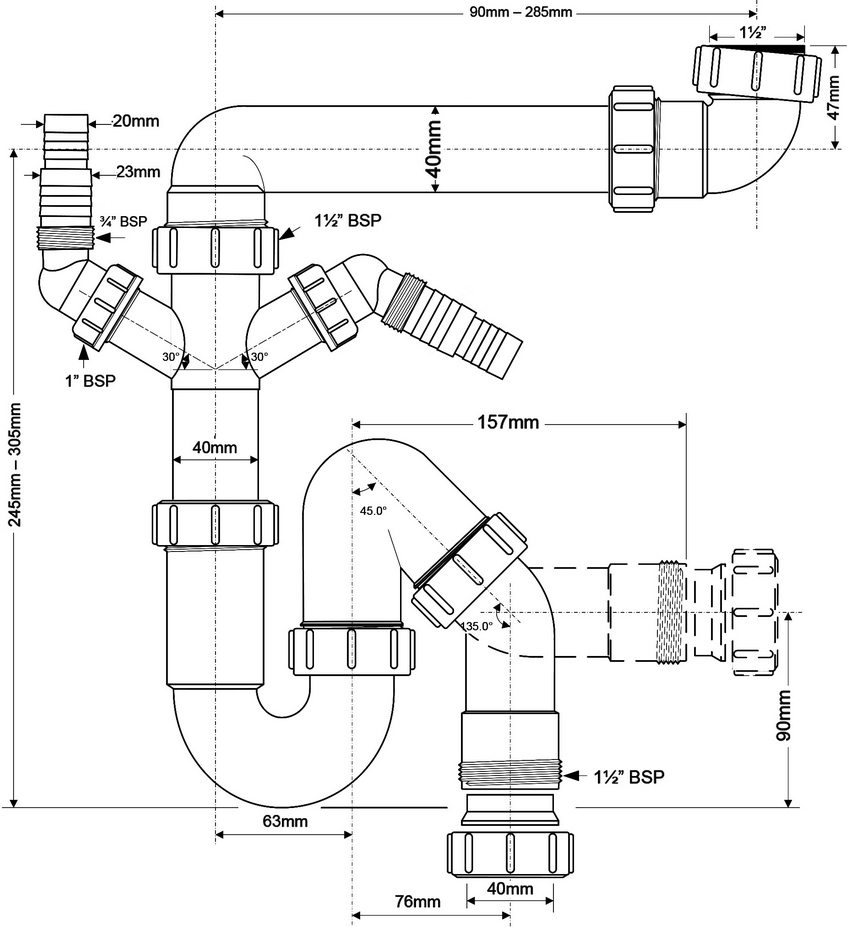
Example of a pipe siphon device without an outlet, with a bend, two adapters for draining household appliances and a universal drain pipe
Metal siphons for kitchen sinks are more expensive than polymer ones, but they are also more durable. The most common materials for metal structures are brass or bronze. They are good because they do not oxidize, they resist corrosion for a long time. There are also options for stainless steel siphons, but they are not used very often due to their high cost. Chrome sink siphons are the most beautiful but also the most expensive option.
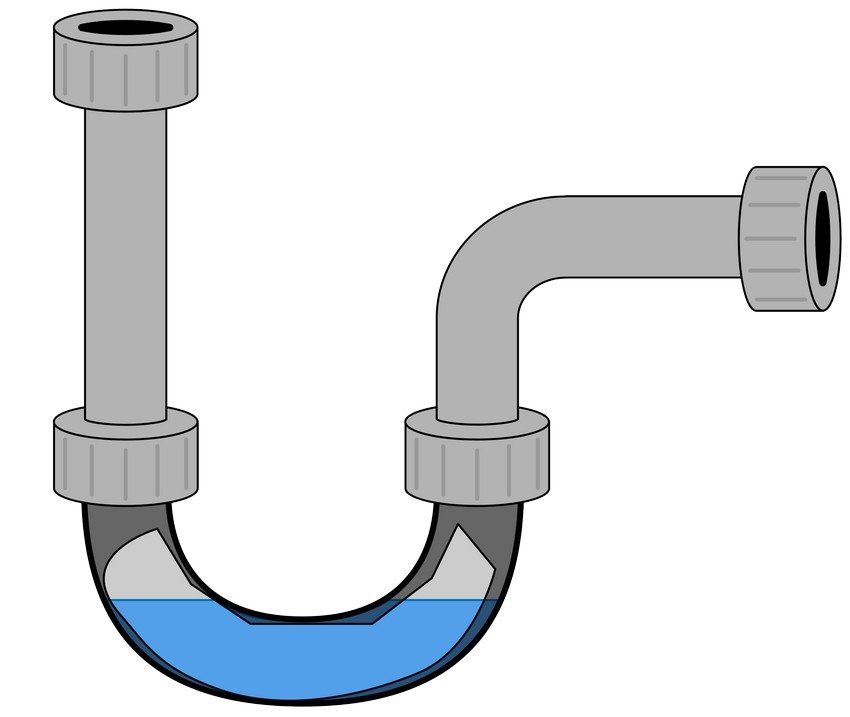
The siphon retains part of the water - this prevents unpleasant odors from entering the room through the drain hole
Siphon for kitchen sinks. Criterias of choice
Before buying, it is worth considering a number of important factors that will help you choose the right model:
- the type of plumbing to which the siphon is connected. It is quite simple to buy equipment for a standard sink, but if the sink was bought to order and installed not according to standards, then you will have to suffer. The ideal option in such cases is the corrugated type, but the bottle type can also be connected.A rigid pipe siphon is only suitable for typical plumbing;
- equipment design. Modern manufacturers offer the widest selection of designs and materials. There are siphons with a protective cover, built-in stopper, plastic or metal flasks. An important point when choosing is the number of washers and spacers. If there are less of them than is required for installation, this can cause certain inconveniences;
- the volume of water that is planned to be passed through the siphons for the kitchen sink or sink. This is a very important parameter, since large-diameter pipes are needed for significant drainage. Otherwise, you risk often getting small but unpleasant floods in the kitchen;
Helpful advice!If you know in advance that you will be connecting additional equipment to the siphon, it is best to purchase a bottle siphon with a tee and a large pipe diameter.
- the presence of overflow. The overflow design is another additional insurance against kitchen flooding;
- the diameter of the neck of the sink and the drain hole into the drain, the distance between these two holes. If these parameters differ from the standard ones, then you will have to buy additional adapters;
- cost of equipment. Siphons for sinks with an overflow made of plastic or metal can vary significantly in price, so when choosing, you should focus on your financial capabilities.
Of course, you can always buy equipment cheaper and easier, but in this case, most likely, after a while it will have to be changed. And this is not only a significant financial cost, but also a large time investment. Therefore, it is better to take into account all the possibilities in advance, for example, connecting additional equipment.
Siphon installation and maintenance
Installing a siphon for kitchen sinks with an overflow or other design features on your own is not so difficult. Of course, here you need minimal skills in the field of working with plumbing and a certain set of tools, but if all this is available, you can remove the old siphon and install a new one without much effort. Tools include a screwdriver, hacksaw, tape measure, and sandpaper. Construction scissors are sometimes useful for cutting the pipe.
Dismantling the siphon
Before installing a new sink siphon in the kitchen, you need to dismantle the old one. This is done very simply: using a screwdriver, unscrew the screw in the center of the drain grate. After that, the siphon is simply removed.
Helpful advice! Often, over time, the nut and the screw stick to each other so much that it becomes very difficult to unscrew the siphon. In this case, sometimes it is enough to disconnect the lower part of the siphon and twist the pipe. If this is not enough, then you need to use special solvents.
Step-by-step instructions for assembling a siphon under the sink
Before assembling the siphon, you need to lay out all the parts in front of you and make sure that all connections, gaskets, pipes and other elements are enough. After that, you can start assembling. Below we will talk about a plastic bottle siphon, as the most common design for a kitchen sink.
First, take the largest flat gasket and slide it over the largest hole in the siphon. A cover cap is screwed on top. Then a union nut is thrown over the branch pipe, which will be attached to the sink, onto which the conical gasket is pulled. The branch pipe is inserted into the upper opening of the siphon and screwed on. Sometimes the branch pipe needs to be connected in one piece with a drain funnel.
Then screwed corrugated pipe... A union nut is put on it, then a conical gasket is pulled, and then the corrugation is screwed to the siphon. Siphons for double sinks are a little more difficult to assemble, since there are two outlets and two pipes, but the assembly principle is the same.
Siphon installation
Siphons for sinks in the bathroom or in the kitchen are installed in the same way. First, a grooved sealing ring is placed on the siphon branch with strips upward, then the remaining ring is pulled under the metal grate. After that, the siphon is placed under the sink, a drain grate is placed on top, a screw is inserted and tightened. That's it, the siphon is installed. It remains only to connect its outlet to the sewer drain.
It is very easy to connect a siphon for a sink in a bathroom or kitchen to the sewer. If the pipe diameter does not match the diameter of the drain hole, special adapters must be used, which can be purchased from a specialized store. Instead of a corrugation, a rigid branch can and should be connected to the sewer drain.
Related article:
Siphon for sinks with overflow. The subtleties of selection and installation. Varieties of siphons. Nuances when choosing siphons for sinks with overflow. Complete set of products, features of correct installation.
After connecting to all drains, the siphon must be checked. To do this, it is filled with water to form a water seal. If nothing leaks anywhere, everything is done correctly and the design can be used.
Helpful advice! It is necessary to tighten the connections in the plastic siphon strongly, but not too much, otherwise you risk damaging the threads and gaskets.
Siphons for sinks under a washing machine or with an overflow are installed in the same way, with the exception that the overflow must be collected separately. The principle of connecting the overflow with the branch pipe is the same as for the corrugations - we put on the nut, then the gasket, insert the overflow into the outlet, tighten the nut.
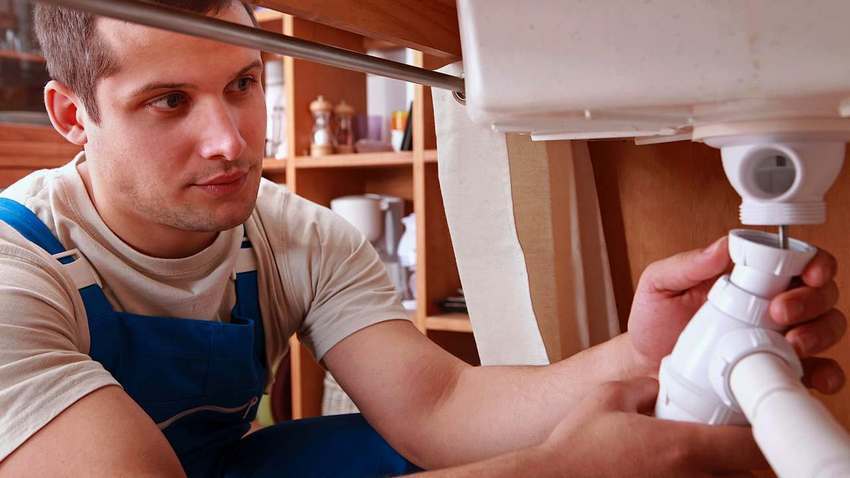
You can increase the time between cleaning the siphon by carefully using a sink, a special grate for the drain or a food grinder
Siphon care
Buying a sink siphon for the kitchen, regardless of the type of construction, material and other features, means that you will have to regularly clean it and remove the resulting blockages. You can increase the time between cleanings by carefully using a sink, a special drain grate or a food grinder. But, in any case, sooner or later the siphon for the sink will have to be cleaned.
Cleaning a siphon for a sink over a washing machine or any other depends, first of all, on its design. The corrugated type can be cleaned only after it has been completely disassembled, but the bottle siphon is broken through using a special tube. Special chemicals are also very popular, but they must be used very carefully, especially if the siphon is plastic. In siphons for a sink in a kitchen with a large neck, special piercing brushes can be used, and no one has canceled the good old plunger.
If you have an old apartment with dilapidated plumbing, it is better to immediately change all existing siphons. It will not take much time and effort, but it will save you from possible problems with drainage and sewerage. The simplest plastic siphon for a kitchen sink is relatively inexpensive, quickly installed with a minimum set of tools and skills, is easy to operate and eliminates a whole host of troubles.
